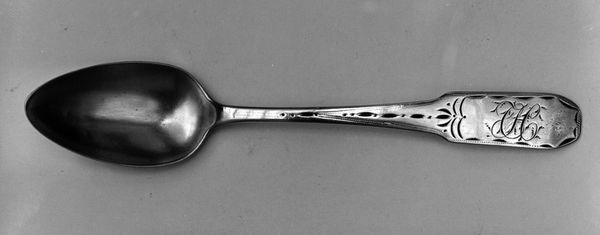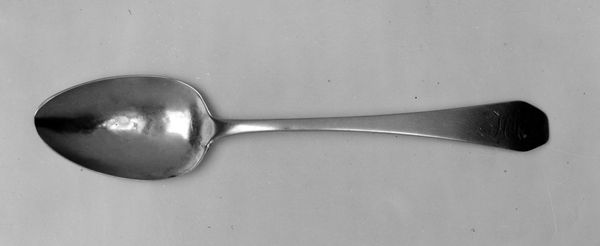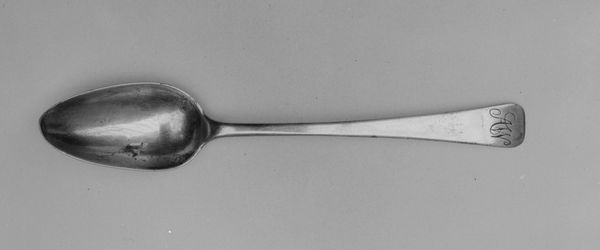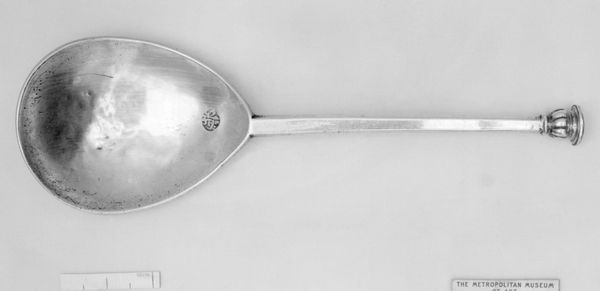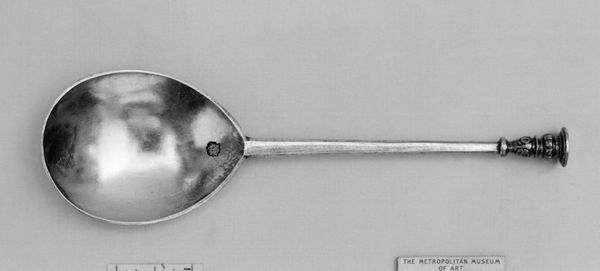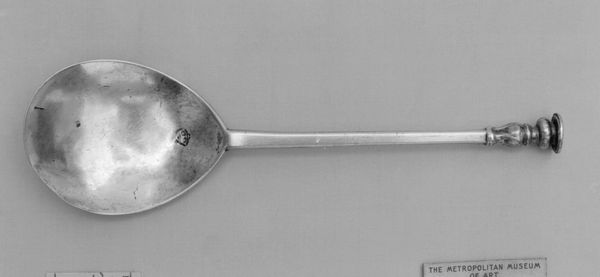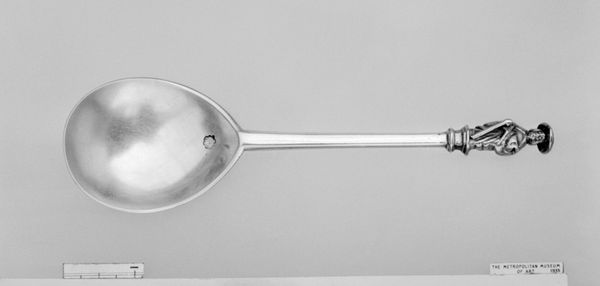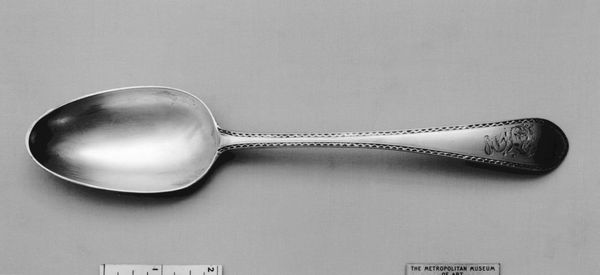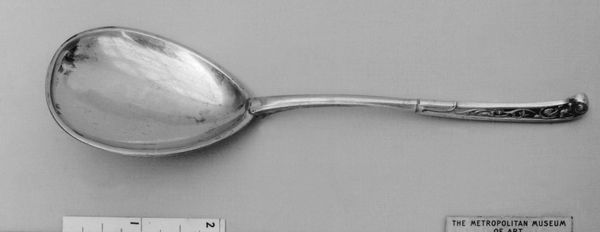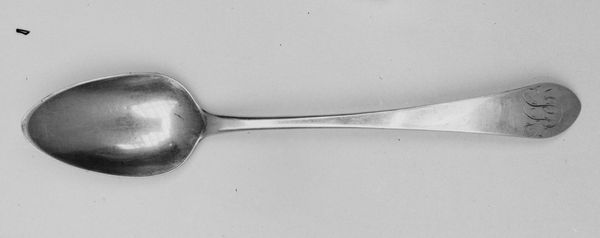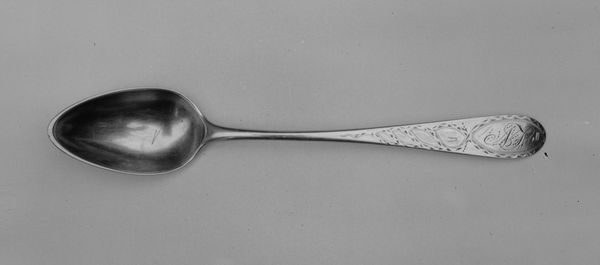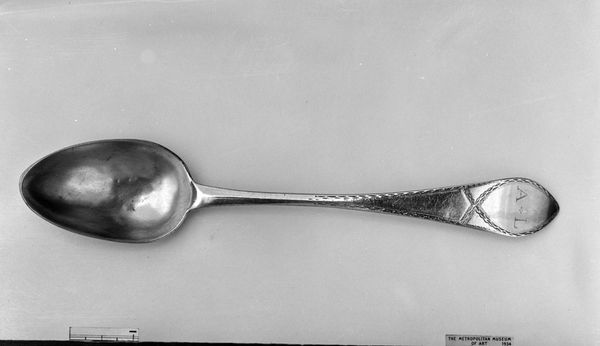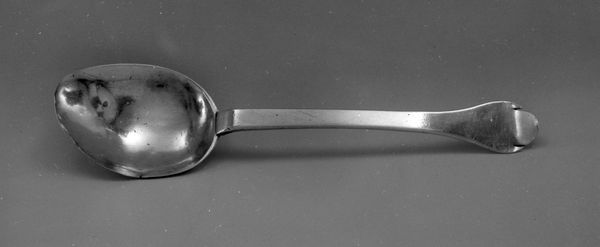
silver, sculpture
#
silver
#
sculpture
#
sculpture
#
decorative-art
Dimensions: Length: 6 3/4 in. (17.1 cm)
Copyright: Public Domain
This seal-top spoon was made in London between 1728 and 1734 by Edward Pocock, a period when London was emerging as a global hub for luxury goods. The spoon is made of silver and its length measures 6 3/4 inches. Back then, owning silverware wasn't just about eating; it reflected one's status in a society deeply divided by class. Craftsmanship was regulated by guilds, maintaining standards but also restricting who could participate. Consider how gender also played a role; silversmithing was largely male-dominated, limiting opportunities for women. The spoon’s seal-top design is heavy with symbolism. Seals were used to mark documents and verify identity, so incorporating it into the design of a spoon subtly connected the owner with authority, and perhaps a need to publicly declare that authority. Reflect on how a simple object like this spoon embodies a complex web of social relations, from labor and skill to class and identity.
Comments
No comments
Be the first to comment and join the conversation on the ultimate creative platform.
